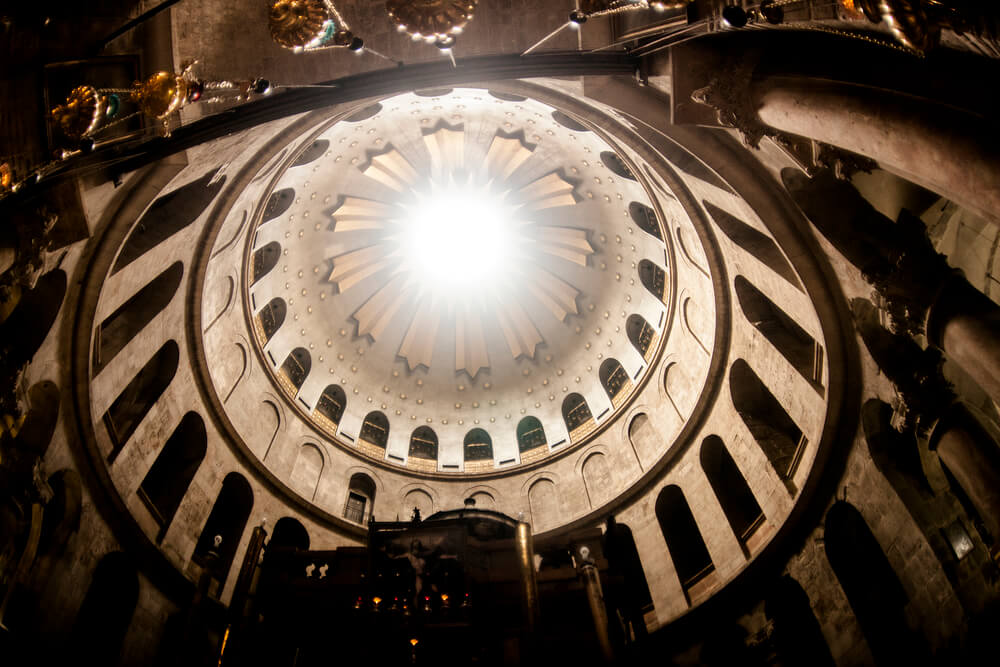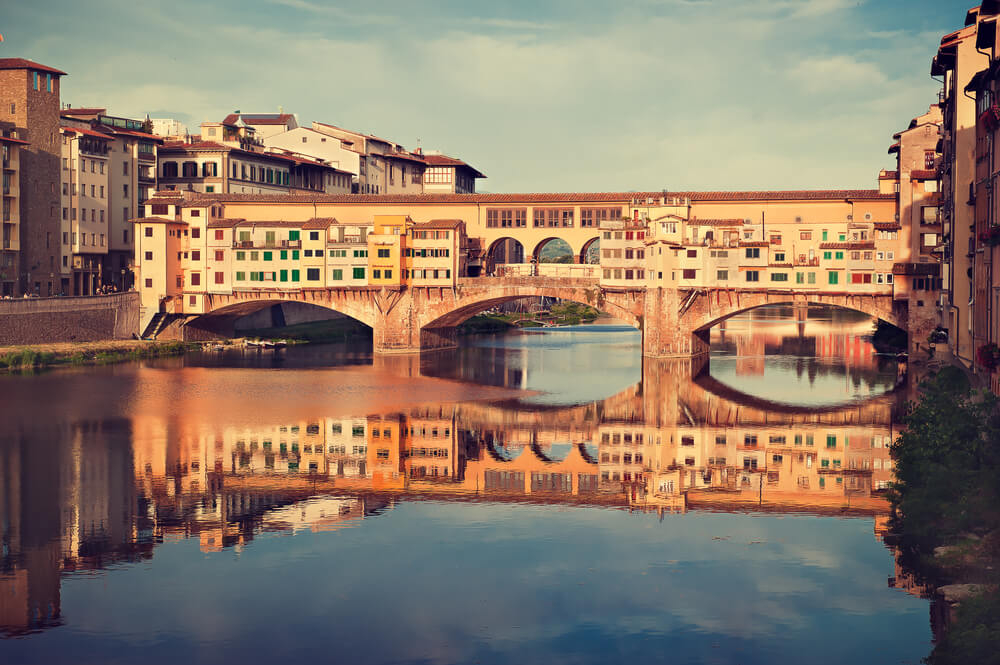Jerusalem syndrome: why in some cities of the world tourists go crazy
Some cities seem to be especially dangerous for tourists: visiting them causes nervous breakdowns so often that mental disorders are named after them - Jerusalem syndrome, Paris syndrome... Something in the air? Or is it all fiction?

Фото: Depositphotos
Oliver McAfee was supposed to return home for Christmas. But 29-year-old landscape designer from Northern Ireland has disappeared. He was last seen on 21 on November 2017, writes Air force.
McAfee traveled by bicycle along the Israeli National Route. He disappeared near the city of Mitzpe Ramon, his bicycle and tent were found two months later in the crater Ramon in southern Israel.
On the National Highway, also called the Israel Trail, tourists on different days picked up McAfee's things - wallet, keys, computer tablet...
The media immediately voiced a version about the possibility of Jerusalem syndrome - a mental condition with a separation from reality, often associated with religious experiences.
Sufferers become paranoid. They see and hear what is not really there. They become obsessed, obsessed. It happens that they disappear.
At the beginning of the 21st century, doctors at the Israeli Kfar Shaul Psychiatric Center reported an average of about a hundred tourists a year with this syndrome (almost half of whom required hospital treatment), mostly Christians. But among them were Jews, and a small number of Muslims.
On the subject: Methods of a totalitarian cult: how to recognize that you are being zombied
Jerusalem Syndrome
Jerusalem syndrome, they wrote in the British Journal of Psychiatry, is a form of psychosis that occurs in a city that “evokes a sense of the sacred, the historical and the heavenly.”
Many already had this or that mental disorder when they arrived in Jerusalem, which pushed them towards an illusory sacred mission.
Doctors describe an American schizophrenic tourist who, even at home, began strength training and more and more felt himself biblical Samson.
He came to Israel, obsessed with the idea of dropping the giant stone blocks of the Wailing Wall. After he was detained by the Jerusalem police, the American was taken to hospital, underwent medical treatment, after which he was sent to the United States accompanied by his father.
But some of those who come to Jerusalem develop the syndrome in the absence of a history of any mental illness. These are a minority - 42 of the 470 tourists admitted to hospital over the past 13 years. But their cases are as dramatic as they are unexpected.
The typical behavior of such people is that they become obsessed with cleanliness soon after arriving in the city: they take endless baths or showers, and constantly try to cut their fingernails and toenails.
They put on a semblance of white toga, often making it from bed linen borrowed from a hotel. They read sermons, shout psalms, sing religious hymns in the streets or in the holy places of Jerusalem.
This usually lasts about a week. Sometimes they are tried to be treated with sedatives or a psychiatrist talks to them. But the best cure is to “physically remove patients from Jerusalem, away from its holy places.”

Фото: Depositphotos
The authors of the article in the British Journal of Psychiatry believe that these tourists (usually from ultra-religious families) experience a strong dissonance between their idealistic ideas about Jerusalem and reality, which leads to the syndrome.
Recalling centuries of territorial disputes and religious conflict, one writer suggested that the city could be considered "fertile ground for mass insanity."
Indeed, Jerusalem syndrome is not something new; its manifestations were observed back in the Middle Ages.
As for the probability of this syndrome in the lost cyclist Oliver McAfee, it should be noted that the Irishman was a zealous Christian.
Those investigating McAfee's disappearance pointed to torn pages from the Bible, crushed by stones, and excerpts from the Holy Scriptures written in McAfee's hand telling how Christ fasted in the desert. In addition, a man-made “chapel” was once reported to have been found - a leveled area of sand surrounded by stones.
Shortly after McAfee disappeared, the Facebook page @helpusfindollie was created. One of the last entries was: "The first anniversary of Oliver's disappearance has come and gone, and unfortunately it looks like the answer is still a million miles away."
On the subject: Seven countries in different parts of the world for a potential expat
Stendhal syndrome
In Florence, psychiatrists experience similar symptoms in other circumstances.
It seems that tourists are so amazed at the magnificence of this city, its architecture and works of art, that some fall into a state of psychosis.
One 72-year-old artist on the famous Ponte Vecchio bridge already after a few minutes began to feel that all his movements were monitored ... by international airlines, and his hotel room was tapped.
A woman in her early 40s was convinced that the figures depicted in the frescoes of the Strozzi Chapel in the Church of Santa Maria Novella pointed to her: “It seemed to me that they were writing about me in the newspapers, they were talking about me on the radio, they were chasing me in the streets.”

Фото: Depositphotos
The Florentine psychiatrist Graziella Magerini talks about more than a hundred tourists who had to be put in the hospital of Santa Maria Nuova between the 1977 and 1986 years. These people had heart palpitations, they sweated profusely, experienced chest pains, dizziness and even hallucinations, loss of orientation, feeling of losing themselves. Some tried to destroy works of art.
All this, according to Magherini, was the result of “personal impressionability, stress and fatigue from the long journey, as well as a collision with a city that is filled with the ghosts of the great, their deaths and the history of Florence.”
For a sensitive tourist, she believes, this is clearly too much.
Magherini calls this Stendhal syndrome - after the French writer who visited Florence in 1817 and, having visited the Basilica of Santa Croce (Holy Cross), admitted that he was “absorbed in the contemplation of its majestic beauty,” and “his heart was strong and racing.” was beating." “The source of life seemed to have dried up within me, and I walked in fear that I would collapse to the ground.”
And although now the number of cases of Stendal syndrome does not exceed two or three a year, something happens regularly in the famous Uffizi Gallery.
Recently, one man had a seizure while looking at Botticelli’s “Spring”. Another tourist fainted in front of Caravaggio's Medusa.
In an interview with the Corriere Della Sera newspaper, the director of the gallery said: “I don’t make diagnoses, but I know: when you find yourself in a museum like ours, full of masterpieces, it, of course, becomes a source of possible emotional, psychological and even physical shock.”
The Paris syndrome
And sometimes a nervous breakdown happens, on the contrary, because the city, about which so much dreamed, does not meet expectations.
Japanese tourists often experience Paris syndrome (more than 60 patients with such psychosis are described in these studies). They are most disappointed that Paris does not look like the city of their dreams.
Frustrated by the harsh faces of the locals and the lack of attention from vendors in stores, some Japanese are shocked by the French capital.
“In Japanese stores, the buyer is the center of attention, but here the salespeople hardly look at you,” explains a representative of an association that helps Japanese families settle in France.

Фото: Depositphotos
But how specific are the syndromes described? Do I need them to go to Jerusalem or to Florence, or to Paris? Are these cities so exclusive that it's time to hang warning signs at the entrance to them?
Mental disorders are one of the main causes of poor health among tourists. According to the WHO, a “psychiatric emergency” is one of the most common reasons for air evacuation.
Acute psychosis occupies one-fifth of all mental problems that tourists have, and for most people this does not happen at the Wailing Wall or at the Church of the Holy Sepulcher.
There are many reasons why this happens to travelers - dehydration, lack of sleep, jet lag, sleeping pills taken on the plane along with alcohol, and sometimes drugs such as the antimalarial mefloquine.
The prevalence of fear of flying ranges from 2,5 to 6,5%, and acute anxiety affects about 60% of travelers.
Add in the stress of airport security, long lines at museums, language barriers and cultural differences, plus personal expectations of the pilgrimage, and you have a picture of what could create the perfect storm.
In many cases, a tourist has a psychiatric illness, which he himself is not aware of, and, once in the Uffizi Gallery or the Church of the Holy Sepulcher, this predisposition becomes the cause of the syndrome.
According to Maherini’s research, more than half of those who went to the hospital have already visited a psychotherapist or psychiatrist.
As commentators on an article in the British Journal of Psychiatry point out, “Jerusalem should not be seen as a pathogenic factor, since the ability to form morbid ideas is inherent in tourists in a wide variety of places and on different routes.”
On the subject: How to get free to the best museums in the USA
Even with respect to the history of Stendhal should make a reservation. His detailed personal diary, corresponding to the time when he came to Florence, is full of prosaic complaints about shoes, but there is not a word about them in the Basilica of Santa Croce.
Although in the published notes he claimed that he experienced a very deep experience there.
Could it be that by proclaiming such a sublime reaction to an encounter with brilliant works of art, a person simply maintains his status as a refined and sensitive person?
Or is it all about stinging shoes and fatigue?
Read also on ForumDaily:
20 most interesting places in Israel, according to tourists
Statue of Liberty: the history of the American symbol
For the restoration of the Cathedral of Notre Dame in two days they collected a billion euros
25 best museums in the world, according to visitors
Subscribe to ForumDaily on Google NewsDo you want more important and interesting news about life in the USA and immigration to America? — support us donate! Also subscribe to our page Facebook. Select the “Priority in display” option and read us first. Also, don't forget to subscribe to our РєР ° РЅР ° Р »РІ Telegram and Instagram- there is a lot of interesting things there. And join thousands of readers ForumDaily New York — there you will find a lot of interesting and positive information about life in the metropolis.











